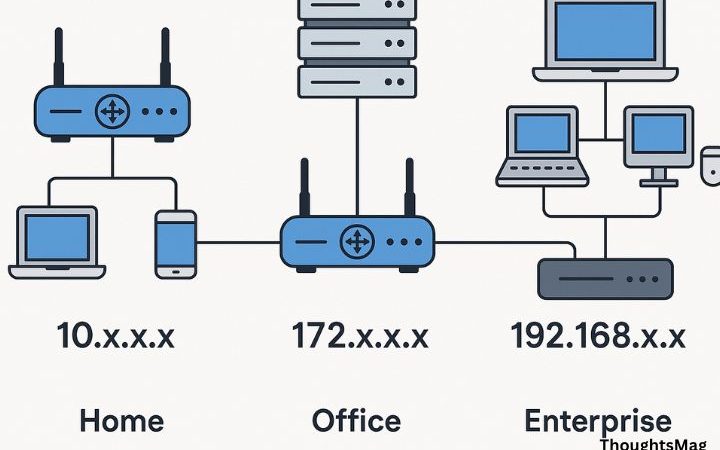The Basics: How to Build a vSAN With StarWind?

With tons of data and information surrounding us, we sometimes feel like we can’t handle it. Many providers offer solutions for our data problems. Yet, it still seems that we need pros to know how to manipulate the information.

Building a virtual SAN (Virtual Storage Area Network) is probably the best thing we can do for all the files and bits of information we need for our business. It doesn’t matter if it’s a small, medium, or large business or an enterprise, a vSAN can be the only solution we need.
What Is a vSAN?
First, let’s talk about what is a storage area network (SAN). A SAN is a network of connected computers that provide storage for your business’s needs. This type of network is something that businesses create to handle access to vast amounts of data in circulation.
A server can access the storage of said data as if we directly attached the storage to it. However, instead of attaching tape libraries and disk arrays directly to the server, they’re connected to a dedicated network that can’t be accessed through LAN (Local Area Network).
That’s the vSAN vs SAN difference. So, a virtual storage area network is a virtualization of the physical storage area network we described earlier. The main reason we use vSANs is that we can resolve any issues related to different parts of the network, and we can configure the different parts independently.
Benefits of Virtual Storage Area Networks
Virtual storage area networks have many benefits, and depending on the provider, they can have quite a few interesting features. Virtualization of servers and physical storage networks is a necessary step for a business, and here’s why:
- Ease of data migration: With a deployed vSAN, you can easily move data around without the need to shut down the servers. There’s going to be no downtime, and all the services will work in continuity.
- Ease of setup: Because of the compatibility and the embedded features, almost all vSANs are quite easy to install.
- Reduced cost: We can build Virtual storage area networks on most server types, even the less expensive ones. So, there’s a possibility to reduce the cost of your storage solutions.
- Improved data lifecycle management: Data access is highly reliant on the frequency of use of said data. With a vSAN, we can easily place the high-frequency data onto high-performance storage, and the low-frequency data onto other storage.
- Ease of management: Virtual area storage networks are incredibly easy to manage because they provide the same features and options for all the servers no matter their physical specifications.
Why Use StarWind?
Apart from the regular use cases such as virtualization of servers, creating DMZ (Demilitarized Zones), edge networks sites, converting localized storage into a virtual storage, etc., there are many advantages of using StarWind:
- Help in migration: StarWind offers the help of their engineers for data migration. Physical and virtual migration are included in their offer.
- VSA option: There’s a possibility to use a pre-built virtual storage appliance. This is a virtual machine for your storage.
- Swordfish API: The software that is an integrated part of the virtual storage area network installation, and it’s something that leaves out the need to install extra vSAN management software.
- Stretched clustering: This provides businesses with constant uptime for their apps and continuity in their business. The thing that makes this possible is the live migration between geographical locations.
How to Build a vSAN With StarWind?

Now that we understand the benefits of running most of our business information and documentation using a vSAN, and we know why StarWind is a great choice, we can focus on the installation. There are a few steps you need to follow to build a vSAN with StarWind.
How to Install StarWind Software?
StarWind is quite easy to install. It’s like any other program that you’ve installed on your device. For the server and software that manages everything, just follow these steps:
- Go to www.starwindsoftware.com/starwind-virtual-san, and get the .exe file.
- Double-click and go through the initial terms of the agreement.
- Choose where you’re going to install StarWind.
- Once you select the location of your installation, select the installation type.
- Choose full installation, and you’re almost done.
- At a certain point, you’ll be prompted to choose the license key type.
- Once you download your preferred license key, select and install it.
How to Configure StarWind vSAN?
Once you launch the StarWind Management Console, it will ask you to choose a path it has to take to get to your storage pool. Once you specify the path, the console opens, and you’ll be able to see two sections on the left pane, clusters, and servers. Here’s how to build it:
- There’s going to be a server section in the left pane, right-click on it. Click Add Server.
- Write the name of the server or the IP address. (Physical server in the network)
- When you add a server, add the storage device
- If you click on Add device, you’ll get the default settings for said device.
- Instead, choose Add device (advanced).
- Once you do this, choose Virtual Disk > Next.
- Name the device and choose a path for the storage.
- Specify the amount of storage you’re going to dedicate and the sector size.
- The 512 bytes sector size is the default and compatible with most storage types.
- The Thick-provisioned storage option works well with most physical storage types.
- Select the cache parameters based on the capacity. The bigger the storage, the bigger the cache parameters, e.g. 1TB capacity equals 1GB cache.
- Then, you need to create a new target so you can connect your device and create a virtual representation of it.
- Once all the parameters are done, you’re finished. Simply repeat the steps to create new devices on your servers, and to expand the vSAN.
Conclusion
Knowing how to build a vSAN for your business is a step forward in storage solutions. StarWind is the way to go according to its features, and it’s quite easy to connect it to physical storage and set up virtual disks.
If you run into any trouble trying to set up the vSAN, you can always request a demo with StarWind, and get more insight into their offers.






